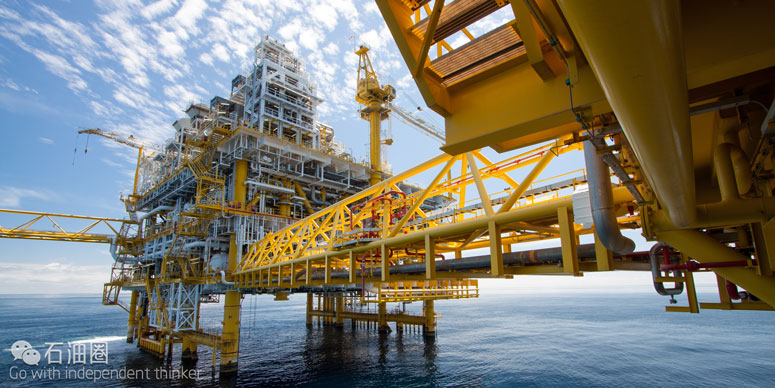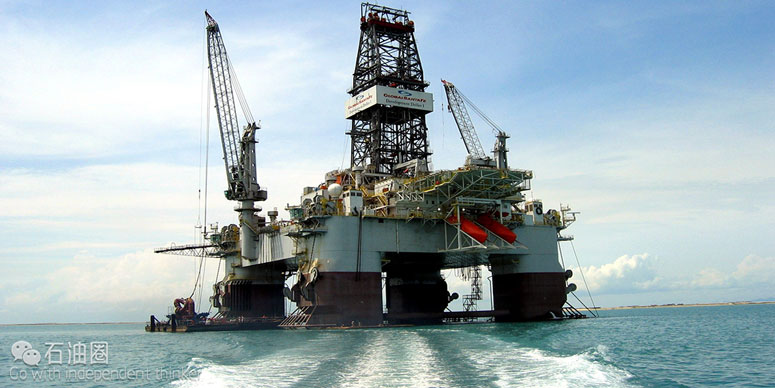The Biggest Opportunity Right Now In Oil And Gas
Dave Forest
Offshore exploration has been a rare bright spot for the global oil and gas industry lately.
Some of the movement in the offshore sector is coming as governments get more accommodating — in an attempt to spur drilling and increase revenues at a time when drilling is down across the world. With this week’s news about the big changes to Brazil’s petroleum laws being a prime example.
Big players like Shell are already moving to take advantage of this shift in Brazil. Announcing that they are moving ahead with the development of the 8 billion-barrel Libra pre-salt field here.
And Brazilian officials reported late this week that the shift to 100% foreign ownership is having a wider effect. With Petrobras CEO Pedro Parente telling the press that international firms began contacting him about opportunities on the same day that Brazil’s Congress voted to change the laws.
And it’s not just governments that are getting motivated when it comes to letting go of good assets.
Major E&Ps are also putting some important fields on the block. With the Financial Times reporting Wednesday that Chevron is in talks to sell its Bangladesh assets for up to $2 billion.
Even though Bangladesh isn’t a place we hear a lot about it, these fields are actually quite strategic. Mainly consisting of natural gas production — with proximity to one of the world’s best nat gas markets, in Southeast Asia.
It will be very interesting to see who might emerge as a potential buyer here. Especially given that a number of big oil and gas players seem to be speeding up their pursuit of offshore assets.
Players like integrated producer BHP Billiton. Which the Australian Financial Review this week reported is considering a big move in offshore development — namely, making an entry into deepwater Mexico.
According to the paper, BHP currently has a team of 50 professionals poring over the geology of Mexico’s deepwater plays. Looking to determine if a bid makes sense as part of upcoming licensing rounds.
Related: Near Term Oil Prices Can’t Go Much Higher
That would be a major jump for BHP into completely new territory. Although such a move would fit very well with the company’s current operations in oil and gas — which have focused recently on deepwater development in the nearby U.S. Gulf of Mexico.
BHP said in June that the GOM is one of just three places it plans to focus for petroleum drilling. And the strategy already appears to be paying off — with the company saying last week it has hit a significant oil discovery in the Caicos well on the Green Canyon Block, located in the offshore south of Louisiana.
In fact, BHP has said that economics of deepwater discoveries like this are actually some of the best in the world right now. With the company noting that increased capital efficiencies (read, much lower drilling and services costs) have made development projects like the company’s Mad Dog 2 field in the GOM viable at oil prices below $50 per barrel.
Such shifts in cost structure are making offshore a big deal again. Stealing focus from onshore shale, which has become much more dubious economically, given the big upfront costs to get into key plays like the Permian — as well as the significant requirement for sustained capital spending to keep up production.
Improving numbers in the offshore are in fact driving a small renaissance in deepwater activity. With analysts at Evercore ISI reporting this week that September permitting of deepwater wells in the U.S. rose 50% month-on-month.
Of course, that amounted to only six wells. But it’s worth noting that those six deepwater permits made up the majority of the ten total permits granted in U.S. waters during September. By contrast, permitting for shallow-water wells fell 70% as compared to September 2015.
That shows the drilling sector in general is still suffering from the current downturn in energy prices. But that deepwater is fast emerging as a potential standout for the industry, even in these tougher times.
Related: Canada’s Carbon Tax: A Model For The Future?
Where should we be looking for this trend to keep unfolding? Aside from the newly-invigorated pre-salt of Brazil, news this week gives a few other ideas globally.
Shell, for example, said it plans to drill two deepwater exploration wells in offshore Tanzania by the end of this year. And the frontier North Sea continues to look interesting — with Suncor saying last week it will pay up to $215 million to buy a 30% interest in the Rosebank natgas project near the Shetland Islands from OMV.
There are even some ultra-radical new ideas being floated these days. With a consortium led by China’s CNOOC reportedly planning 3D seismic in the offshore of Iceland — a place some geologists believe could have similar potential to the northern North Sea.
All of which suggests this is a sector to keep an eye on for energy investors and project developers. Watch for deals being done on offshore assets (Thailand’s PTTEP is reportedly on the hunt for new fields), and for new opportunities to emerge as governments and big players loosen the strings on leading plays around the world.
Here’s to going deep.


 石油圈
石油圈



